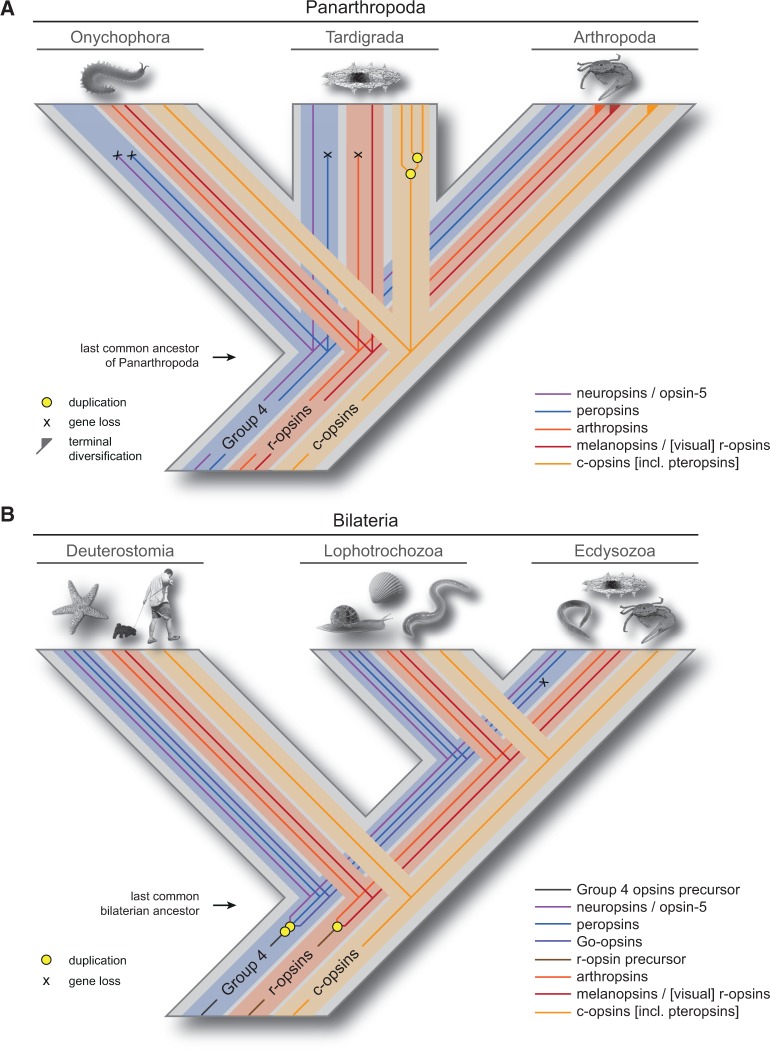Fig. 3.—
Hypotheses on the evolutionary history of opsin genes in Panarthropoda and Bilateria based on our phylogenetic analyses of metazoan opsin sequences. (A) Scenario on opsin evolution in Panarthropoda. The trichotomy is due to the uncertain position of Tardigrada as the sister group of Arthropoda, Onychophora, or Onychophora plus Arthropoda (see Mayer et al. 2013 and references therein). According to this scenario, the last common ancestor of Panarthropoda possessed five opsin genes: One c-opsin, two r-opsins, and two Group 4 opsins. The three c-opsin genes of H. dujardini might have evolved by gene duplications either in the tardigrade lineage, or a tardigrade subgroup. (B) Scenario on opsin evolution in Bilateria, according to which the last common bilaterian ancestor possessed six opsin genes. Although the arthropsin and melanopsin/[visual] r-opsin lineages arose by a duplication of the r-opsin precursor, two additional duplications in the bilaterian Group 4 opsin clade gave rise to the neuropsin/opsin-5, peropsin, and Go-opsin lineages. Note that the Go-opsin gene was subsequently lost in the last common ancestor of Ecdysozoa.

